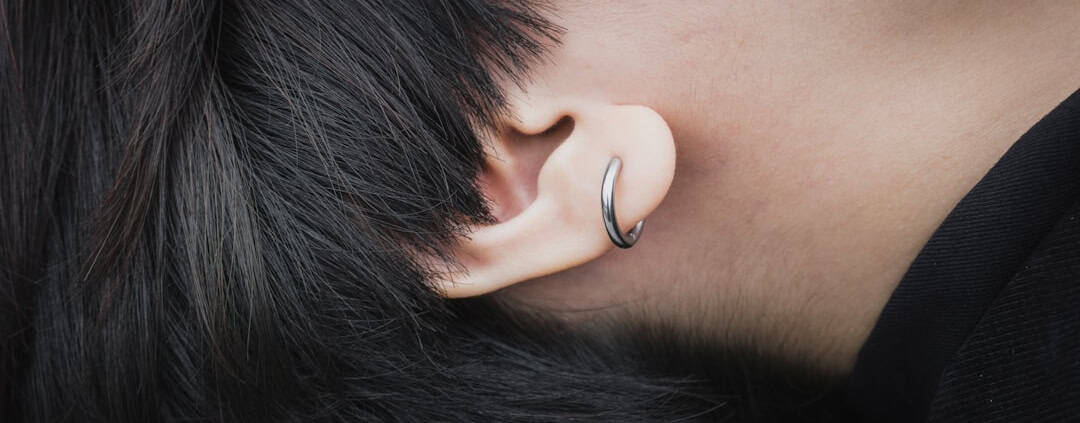Selecting the Perfect Jewelry for Your Piercing: A Style Guide
Body piercings have been a form of bodily modification for centuries, with a wide array of options available. Some of the most prevalent types include ear, nose, lip, eyebrow and navel piercings. Each variety has its own distinct style and placement, and it is crucial to consider the anatomy of the intended area before proceeding.
For instance, ear piercings can be performed on the lobe, cartilage or tragus, whilst nose piercings can be done on the nostril or septum. A thorough understanding of the various piercing types can assist in making an informed decision about which is most suitable. Regarding body piercings, there are also more unconventional options to contemplate, such as dermal piercings, surface piercings and genital piercings.
These types necessitate careful consideration and research, as they may have differing healing times and aftercare requirements compared to more common piercings. It is essential to consult a professional piercer with experience in these specific types to ensure a safe and informed decision. Overall, comprehending the diverse range of piercings available can aid in selecting the most appropriate option for one’s personal style and preferences.
Summary
- There are various types of piercings, including ear, nose, lip, and body piercings, each requiring different care and jewellery options.
- When matching jewellery to your personal style, consider factors such as metal type, design, and overall aesthetic to ensure a cohesive look.
- The size and shape of your piercing will determine the type of jewellery that will fit and look best, so it’s important to consider these factors when making a selection.
- Choosing the right material for your jewellery is crucial for both style and safety, with options including gold, silver, titanium, and surgical steel.
- When exploring gemstone and colour options for your jewellery, consider your skin tone, personal preferences, and the overall look you want to achieve.
Matching Jewelry to Your Personal Style
Considering Your Personal Style
Once you’ve chosen a piercing, the next step is to select the right jewellery to complement your personal style. There are countless options to choose from, including studs, hoops, captive bead rings, barbells, and more. When it comes to selecting jewellery for your piercing, it’s important to consider your personal style and the overall look you want to achieve.
Matching Jewellery to Your Aesthetic
For example, if you have a more minimalist style, you may prefer simple studs or small hoops, while those with a more edgy or alternative style may opt for statement pieces such as septum clickers or industrial barbells. It’s also important to consider the material of the jewellery when matching it to your personal style. For those with sensitive skin, hypoallergenic materials such as titanium or niobium may be the best option, while others may prefer the look of gold or silver.
Colour, Finish, and Confidence
Additionally, considering the colour and finish of the jewellery can help you achieve the desired aesthetic. Whether you prefer a sleek and polished look or a more rustic and textured finish, there are endless options to choose from. Ultimately, matching jewellery to your personal style is about finding pieces that make you feel confident and express your individuality.
Considering the Size and Shape of Your Piercing
When selecting jewelry for your piercing, it’s important to consider the size and shape of the piercing itself. Different types of piercings may require specific sizes or styles of jewelry to ensure a comfortable fit and proper healing. For example, cartilage piercings may require smaller studs or hoops to avoid irritation, while larger gauge jewelry may be more suitable for stretched earlobes or septum piercings.
It’s important to consult with a professional piercer to determine the appropriate size and shape of jewelry for your specific piercing. In addition to the size and shape of the piercing, it’s also important to consider the placement of the piercing when selecting jewelry. For example, a forward helix piercing may require a curved barbell to accommodate the unique angle of the piercing, while a nostril piercing may require a specific type of stud or hoop to fit comfortably in the nostril.
Taking these factors into consideration can help you select jewelry that not only looks great but also feels comfortable and promotes proper healing. Overall, considering the size and shape of your piercing is essential when choosing jewelry that is both stylish and functional.
Choosing the Right Material for Your Jewelry
| Material | Pros | Cons |
|---|---|---|
| Gold | Durable, doesn’t tarnish | Expensive |
| Silver | Affordable, versatile | Tarnishes easily |
| Platinum | Strong, hypoallergenic | Expensive, heavy |
| Stainless Steel | Durable, affordable | Can cause skin irritation |
The material of your jewelry is an important consideration when it comes to both style and safety. Different materials offer different benefits and drawbacks, so it’s important to choose one that suits your needs and preferences. Some common materials used for body jewelry include surgical steel, titanium, gold, silver, and biocompatible plastics.
Surgical steel is a popular choice for its durability and affordability, while titanium is known for its hypoallergenic properties and lightweight feel. Gold and silver are popular choices for their luxurious look, but it’s important to ensure that they are made from high-quality materials to avoid irritation or allergic reactions. For those with sensitive skin or metal allergies, biocompatible plastics such as PTFE or BioFlex may be the best option.
These materials are flexible, lightweight, and hypoallergenic, making them ideal for those who struggle with metal allergies. It’s important to do thorough research on the materials available and consult with a professional piercer to determine which option is best for your specific needs. Ultimately, choosing the right material for your jewelry is essential for both comfort and safety.
Exploring Different Gemstone and Colour Options
Gemstones are a popular choice for body jewelry as they add a touch of sparkle and colour to any piercing. From classic clear crystals to vibrant coloured gemstones, there are endless options to choose from when it comes to adding some bling to your look. When exploring different gemstone options, it’s important to consider your personal style and the overall aesthetic you want to achieve.
For those with a more understated style, clear crystals or subtle gemstones such as opal or turquoise may be the perfect choice, while those with a bolder style may opt for vibrant gemstones such as ruby or sapphire. In addition to considering your personal style, it’s also important to think about the symbolism and meaning behind different gemstones. For example, amethyst is often associated with peace and tranquillity, while emerald is linked to growth and renewal.
Choosing gemstones that hold personal significance can add an extra layer of meaning to your jewelry and make it even more special. Whether you prefer classic diamonds or unique birthstones, exploring different gemstone options can help you find the perfect jewellery that reflects your personality and style.
Tips for Layering and Mixing Jewelry
Creating Visual Interest
Mixing different types of jewellery such as studs, hoops, and dangles can create visual interest and add dimension to your overall style. In addition to considering the types of jewellery you want to layer and mix, it’s also important to think about how different materials and colours work together.
Experimenting with Materials and Colours
Mixing metals such as gold and silver can create a modern and eclectic look, while layering pieces with different gemstones can add a pop of colour and sparkle.
Expressing Your Creativity
It’s important to experiment with different combinations to find what works best for you and complements your personal style. Ultimately, layering and mixing jewellery is a fun way to express your creativity and create a look that is uniquely yours.
Caring for Your Piercing and Jewelry
Proper care and maintenance are essential for keeping your piercing and jewellery looking great and feeling comfortable. After getting a new piercing, it’s important to follow the aftercare instructions provided by your piercer to promote healing and prevent infection. This may include cleaning the piercing with saline solution or a gentle soap, avoiding touching or twisting the jewellery, and avoiding activities that may irritate the piercing.
It’s also important to avoid changing or removing the jewellery too soon, as this can disrupt the healing process. In addition to caring for your piercing, it’s also important to clean and maintain your jewellery regularly. This may include gently cleaning the jewellery with a soft cloth or mild soap to remove any buildup or debris.
It’s also important to store your jewellery in a clean and dry environment when not in use to prevent tarnishing or damage. Regularly inspecting your jewellery for any signs of wear or damage can help prevent issues such as breakage or irritation. Overall, caring for your piercing and jewellery is essential for maintaining their appearance and ensuring they remain comfortable and safe to wear.
If you’re considering getting a new piercing, you may want to check out the top 10 FAQs about body piercing on The Piercing Places blog. This informative article covers everything from the piercing process to aftercare, helping you make an informed decision about your new body modification. Whether you’re a piercing newbie or a seasoned pro, this article is a must-read before you head to the piercing studio. https://www.thepiercingplaces.com.au/top-10-faqs-about-body-piercing/
FAQs
What are the different types of piercings?
There are various types of piercings, including earlobe piercings, cartilage piercings, nose piercings, lip piercings, eyebrow piercings, tongue piercings, nipple piercings, navel piercings, and genital piercings.
What types of jewelry are suitable for different piercings?
The type of jewelry suitable for a piercing depends on the location and type of piercing. For example, earlobe piercings can typically accommodate studs, hoops, and dangly earrings, while cartilage piercings may require smaller, more delicate jewelry such as studs or small hoops.
How do I choose the right jewelry for my piercing?
When choosing jewelry for your piercing, consider factors such as the size and shape of the jewelry, the material it is made from (e.g. surgical steel, titanium, gold), and any potential allergies or sensitivities you may have. It’s also important to consider the style and aesthetic you are going for, as well as the healing process of the piercing.
What are some common materials used for piercing jewelry?
Common materials used for piercing jewelry include surgical steel, titanium, gold, and niobium. These materials are often chosen for their hypoallergenic properties and durability.
How do I ensure the jewelry I choose is safe for my piercing?
To ensure the jewelry you choose is safe for your piercing, it’s important to select high-quality, hypoallergenic materials and to ensure that the jewelry is the appropriate size and shape for your piercing. It’s also advisable to consult with a professional piercer for guidance on suitable jewelry for your specific piercing.





